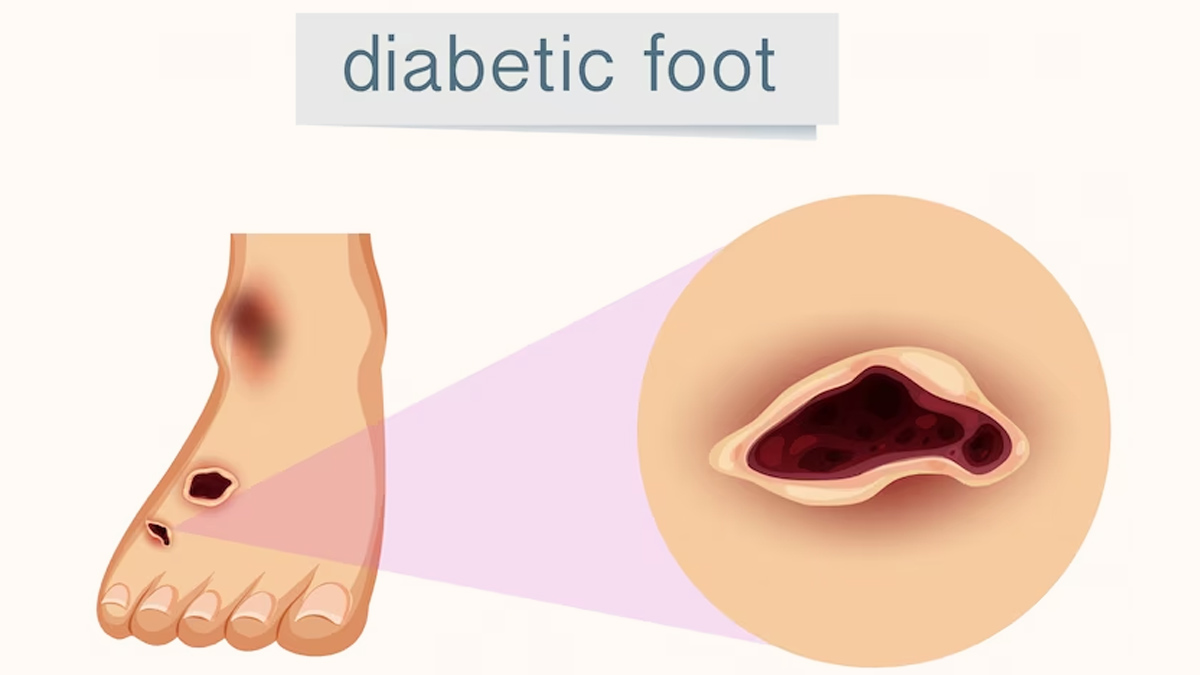
Millions of individuals suffer from diabetes, where the body's ability to make or utilise insulin is compromised, resulting in abnormal blood glucose levels. Over time the elevated level of sugar damages the blood vessels, nerves, and organs posing risk for infections, ulcers, and other complications. Individuals with diabetes are more likely to develop foot ulcers because of poor blood circulation, decreased sensation, and slow healing. Apart from uncontrolled blood glucose level, structural foot deformities, elevated blood pressure and smoking are among the major risk factors for diabetic foot ulcers. Men are more prone to get them as well.
Table of Content:-
These ulcers, which appear as open sores or wounds on the feet, can be painful, challenging to heal, and potentially result in life-threatening complications like infections and gangrene that could lead to amputation. In an interaction with Dr VP Puvaneswaran, MD, Physician and Southeast Asia Regional Manager of Axio Biosolutions, explained about the lifestyle - Modification To Prevent Diabetic Foot Ulcer.
Diabetic foot ulcers can be avoided by following these precautions:
Healthy Ways To Adopt
Opting for healthy choices such as adopting a diabetic diet, leading an active lifestyle, and taking medications as prescribed will help control blood sugar. The most crucial step in managing diabetic foot ulcers is by controlling your blood sugar level as they damage your feet nerves and blood vessels, deprive the foot of oxygen supply, and make it more difficult for the wounds to heal. Therefore, it is critical to regularly monitor and maintain your blood glucose level within the range that has been prescribed by the healthcare professional.

Also read: Pressure Ulcers: How This Skin Condition Affects People
Wear Appropriate Footwear
Foot ulcers can be avoided by wearing comfortable and protective shoes that offer sufficient support and minimise the impact on high-pressure areas of the foot. Flip-flops, high heels or shoes that are too tight or too loose must be avoided to reduce the risk of injury to the foot. This can also cause ingrown toenails or pose the risk of infection. Those with diabetes may benefit from wearing customised shoes to improve healthy circulation in feet. Furthermore, avoiding walking barefoot is also crucial as it reduces the risk of trauma (cuts & bruises) of the foot.
Foot Care
Damaged nerves can reduce the body’s ability to control the moisture of the feet. Too much or too little moisture can damage the skin especially between the toes. To reduce the dryness, you should rinse your feet with mild soap and lukewarm water then dry them attentively especially in between your toes. You can mildly apply moisturiser on your feet but not too much between the toes as it can result in a moist environment that is more conducive to infection. Also, you can consider wearing moisture-wicking socks or changing your socks frequently during the day if your feet tend to perspire a lot.
Also read: Can Probiotics Improve Ulcerative Colitis Symptoms? Read This To Find Out
Trim Toenails Carefully
Your toenails should be carefully trimmed, and any rough edges should be filed neatly. Trimming toenails too short or not straight across can increase the chance of ingrown toenails, which can lead to foot ulcers. Also, it is crucial to avoid overly shortening toenails, which might result in infection. Thus, one can consider seeking help from a podiatrist or other foot specialist if they have trouble with their toenails.

Final Takeaway
In the management of diabetic foot ulcers, blood sugar management, foot care, and choosing the right footwear must all be considered. These methods can drastically help reduce the likelihood of developing a foot ulcer.
Also watch this video
How we keep this article up to date:
We work with experts and keep a close eye on the latest in health and wellness. Whenever there is a new research or helpful information, we update our articles with accurate and useful advice.
Current Version